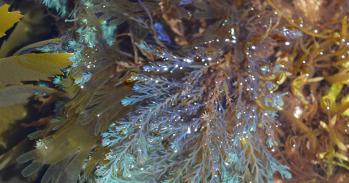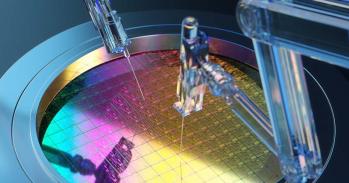Mineral-based waste forms could enable safer, cheaper and more publicly acceptable disposal.
Mineral-based waste forms could enable safer, cheaper and more publicly acceptable disposal.
Mineral-based waste forms could enable safer, cheaper and more publicly acceptable disposal.
Scientists have laid the foundations for a method of containing radioactive waste that would not leak for thousands of years.
A joint team, from the University of Cambridge and the Pacific Northwest National Laboratory (PNNL) in the US, has begun to devise ways to measure the effectiveness of storing radioactive waste in different crystal forms.
These tests could be used to develop a method of storing highly radioactive elements that would only begin to leak thousands of years into the future. By then most of the radioactivity would have decayed.
As well as making the storage of the waste safer, the process could also end up saving governments huge quantities of money. Earlier this year, Britain announced plans to bury its nuclear waste stockpile - about 470,000 cubic metres of radioactive waste - hundreds of metres beneath the earth's surface.
At the moment, doing so would necessitate the selection of a site which had sufficiently stringent geological features to withstand any potential leakage at a cost of billions of pounds. In the United States, $7billion has already been spent researching the viability of the Yucca Mountain burial site. Questions about its safety still remain, and the project is expected to cost between $50billion and $100billion in total.
"By working harder on the waste form before you started trying to engineer the repository or choose the site, you could make billions of pounds worth of savings and improve the overall safety," Cambridge earth scientist Dr Ian Farnan, who led the research, said.
"At the moment, we have very few methods of understanding how materials behave over the extremely long timescales we are talking about. Our new research is a step towards that.
"We would suggest that substantive efforts should be made to produce a waste form which is tougher and has a durability we are confident of, in a quantitative sense, before it is stored underground, and before anyone tried to engineer around it. This would have substantial benefits, particularly from a financial point of view."
When highly radioactive substances like plutonium are stored they are naturally unstable. According to current thinking, elements like plutonium should be combined with a synthetic mineral at a very high temperature to form a crystal.
However, the crystal structure can only hold the radioactive elements for so long. Inside the crystal, radioactive decay occurs and tiny atomic fragments called alpha particles shoot away from the decaying nucleus, which recoils like a rifle. The structure is blasted repeatedly until it breaks down, increasing the potential for leakage.
Some earth and materials scientists believe it is possible to create a structure that rebuilds itself after these "alpha events" so that it can contain the radioactive elements for much longer. The tests developed by the Cambridge and PNNL team would enable scientists to screen different mineral and synthetic forms to test which would be the most durable.
The initial findings, reported in the journal Nature, suggest some mineral forms would not be sufficiently effective. During their research the team measured crystals comprising plutonium, silicon and zirconium oxides (zircons) that were created 25 years ago. The magnetic resonance measurements suggest that these would be more susceptible to leakage within 1,400 years and that the crystal would swell and potentially crack much sooner - perhaps within just 210 years.
However, the work did not address leakage and William J Weber, a fellow at the Department of Energy national laboratory in Richland, Washington, who made the samples used in the study, cautioned that the researchers detected no cracking. Weber noted that the "amorphous" or structurally degraded natural radiation-containing zircon can remain intact for millions of years and is one of the most durable materials on earth.
PNNL senior scientist and nuclear magnetic resonance expert Herman Cho, who co-wrote the report, said: "The testing method we have developed adds a valuable new perspective to research on radioactive waste forms in general.
"It has also raised the question: 'How adequate is our understanding of the long-term behaviour of these materials? Studies of other waste forms, such as glass, could benefit from this technique."
This work is licensed under a Creative Commons Licence. If you use this content on your site please link back to this page.





